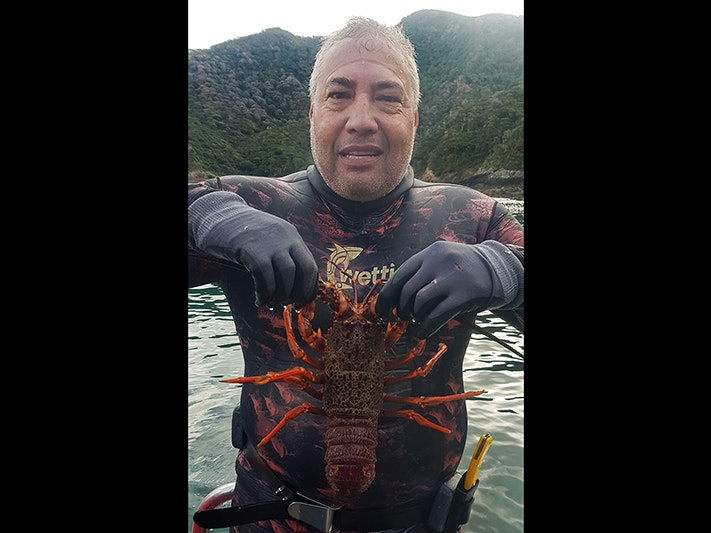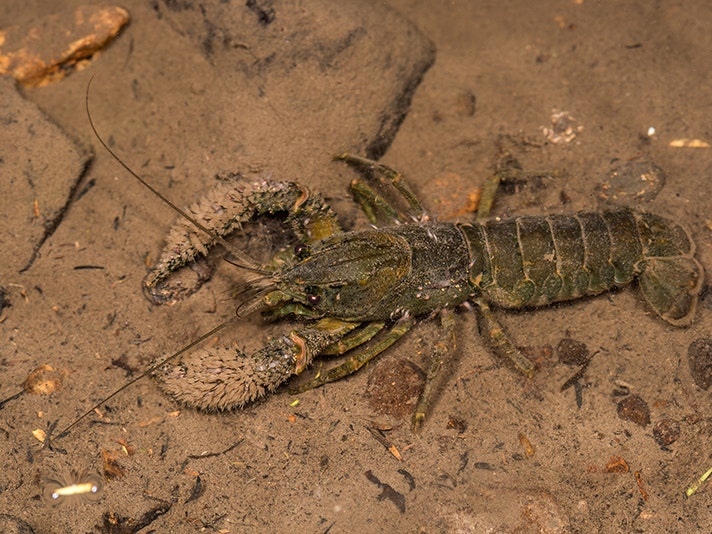
Traditional knowledge and the kōura nursery cycle
Exhibition experience developer Dan Parke spoke with Tamati Stevens a kairangahau (researcher), kairuku (diver) and educator specialising in rocky reef ecosystems.
Free museum entry for New Zealanders and people living in New Zealand
Open every day 10am-6pm
(except Christmas Day)
Free museum entry for New Zealanders and people living in New Zealand
Why does the kōura look like it is made from separate shell pieces? Read the story of Panenehu and his kōoura.
In 1994 and 1995, Māori artist Brian Gunson (1942–2019) designed two sets of stamps for New Zealand Post while working with the marae-based design collective Manu Kopere based at Hongoeka Marae in Plimmerton.
The first set of stamps in 1994 is the Pūrākau o ngā atua (stories of the gods) series, with each of the seven stamps depicting a different pūrākau: ‘Māui pulls up Te Ika (the fish)’, ‘Rona is snatched up by Marama (Moon)’, ‘Māui attacks Tuna (eel)’, ‘Tāne separates Rangi (Sky) and Papa (Earth)’, ‘Matakauri slays the Giant of Wakatipu’, and ‘Panenehu shows Kōura to Tangaroa’.
Brian Gunson’s widow, Patricia Gunson, has generously given permission for us to show this last stamp, ‘Panenehu shows Kōura to Tangaroa’, here:
Issued one dollar and eighty cents 'Māori Myths' stamp, Leigh-Mardon Pty. Limited; printer; 1994; Melbourne. The New Zealand Post Museum Collection, Gift of New Zealand Post Ltd. 1992. Used with permission from Patricia Gunson. Te Papa (PH003326)
Panenehu, a Māori chief, missed the foods of his homeland – especially kōura. After praying, he was sent a kōura drawn on a rock. In his dreams, he was told to take the drawing to the seashore and show it to Tangaroa, the sea god.
In his rush to get to the shore, he dropped and smashed the rock but by using red clay he pieced it together. When the kōura finally arrived they looked just like the broken image Panenehu had patched together.
Today these ugly but delicious creatures can be found all around the coast of Aotearoa New Zealand.
_______
The following year, in 1995, Gunson designed a second series of stamps, Māori Language, this time of tangata Māori and elements of te reo Māori such as waiata, kōhanga reo, karanga, pūrākau, and whakapapa.

Exhibition experience developer Dan Parke spoke with Tamati Stevens a kairangahau (researcher), kairuku (diver) and educator specialising in rocky reef ecosystems.

Kōura or Paranephrops zealandicus and Paranephrops planifrons live in freshwater places and are valued kai (food) for many people in Aotearoa New Zealand.

Crustacea includes lobsters, crabs, shrimps, prawns, hoppers, wood lice, water fleas, and several other groups. Most crustaceans live in the sea but some are found in freshwater or on land. The one thing they all need to survive is water, or at least a moist habitat.